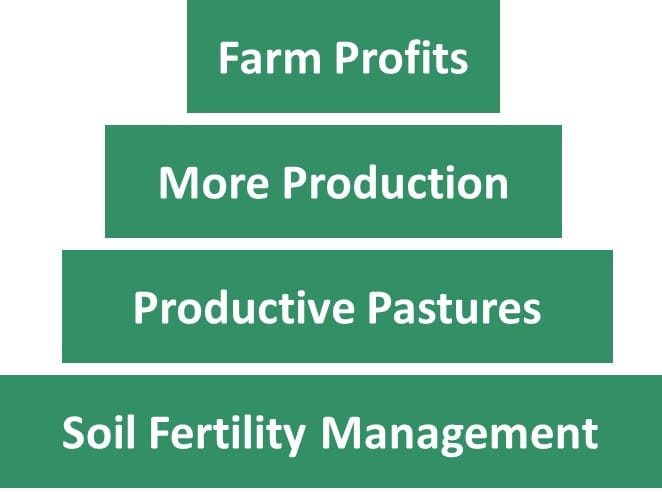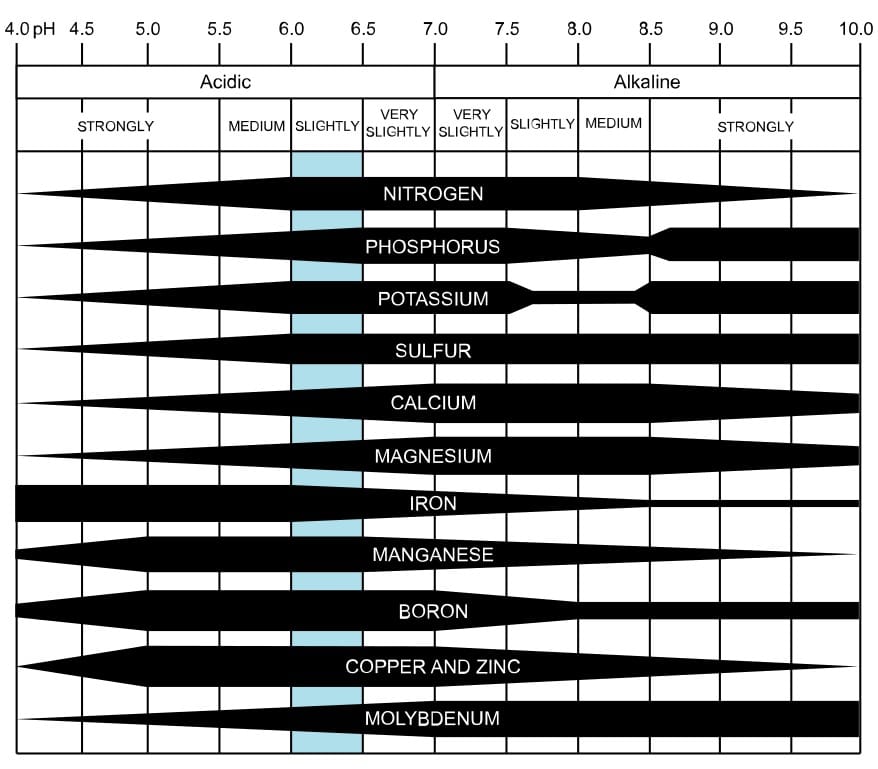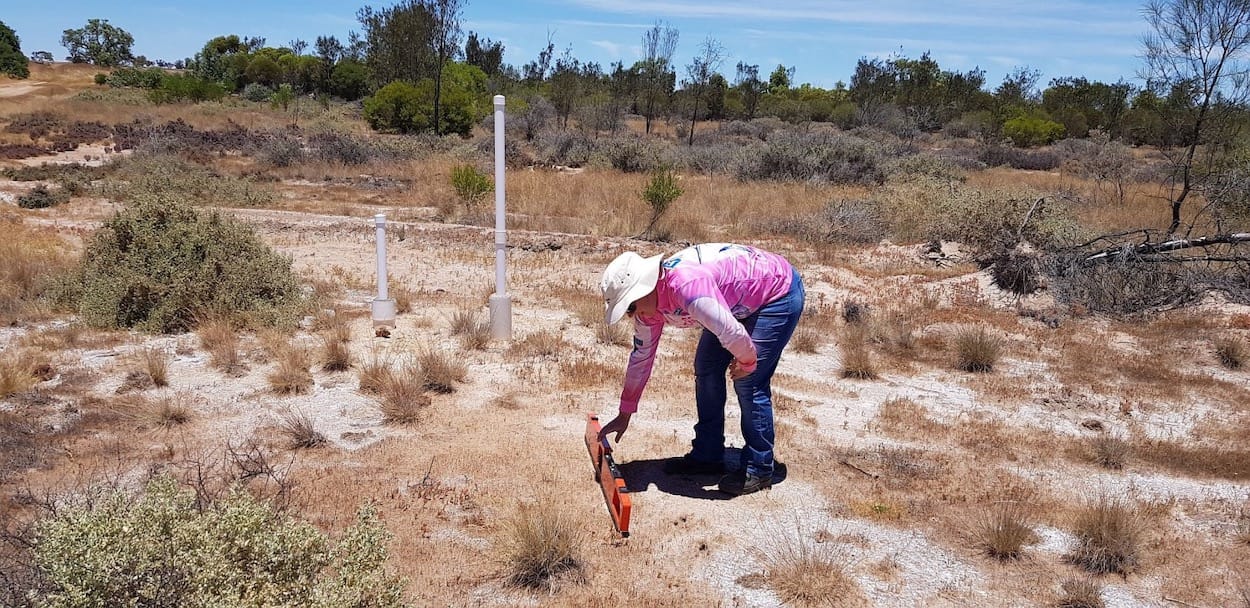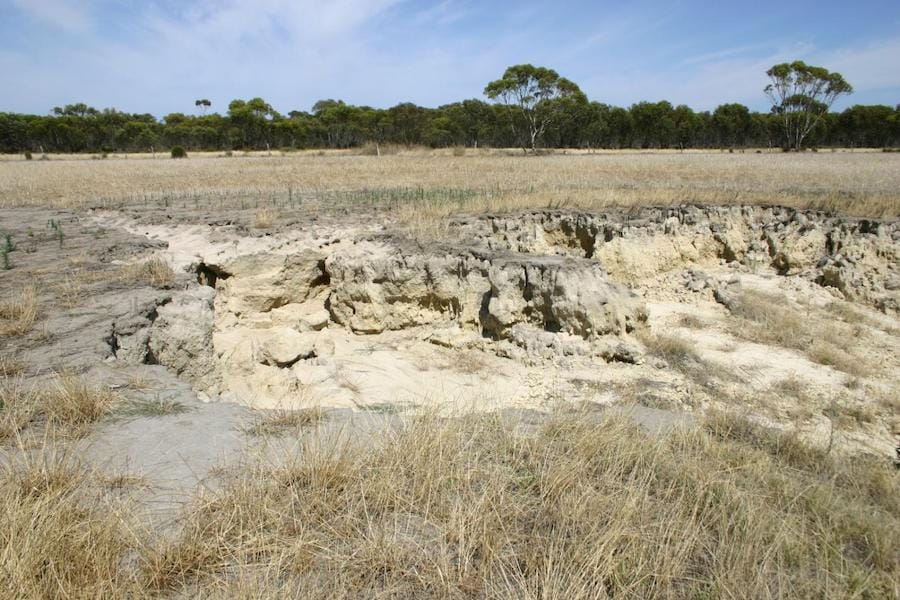Through the years, it has been well established that an increase in fertiliser use has yielded an increase in profitability on dairy farms.
Volumes have been written about soil fertility and how to fertilise your pasture the right way. However, most information out there isn't written for dairy farmers. It doesn't tie the link to how proper fertiliser management leads to better production and profits. So we wrote this concise three-part guide.
Now, in part 1, we speak about nutrients, how proper fertiliser management can lead to better profits and the four biggest soil-fertilizer limiting factors.
Next in part 2, and part 3, we’ll cover how to identify various nutrient deficiencies in your pasture and cows. And we’ll talk about how you can create a precise fertilizer-nutrient management plan for your dairy farm.
Let’s begin by identifying the key nutrients.
The Major and Minor Nutrients:
Today we know that 16 nutrients are needed for plants to grow well on your paddocks.
Table 1: List of major and minor nutrients that plants need.
| Major Nutrients | Minor Nutrients |
|---|---|
| Carbon (C) | Iron (Fe) |
| Hydrogen (H) | Manganese (Mn) |
| Oxygen (O) | Boron (B) |
| Nitrogen (N) | Molybdenum (Mo) |
| Phosphorus (P) | Copper (Cu) |
| Potassium (K) | Zinc (Z) |
| Calcium (Ca) | Chlorine (Cl) |
| Magnesium (Mg) | Nickel (Ni) |
| Sulphur (S) | Cobalt (Co) |
| Sodium (Na) | |
| Silicon (Si) |
However, before you replenish your soils with these nutrients, you need to know about a few things. For instance, it’s hard to gauge nutrient levels in your soil, unless you do a thorough soil test.
And even after get your soil test report; you have to replenish these nutrients in small doses, to avoid leaching, plant damage and excessive toxicity.
Out of these 16 nutrients, three of them, namely Carbon (C), Hydrogen (H) and Oxygen (O) are obtained from the atmosphere through photosynthesis.
The other 13 nutrients are taken from the soil, by your plant roots, little by little. Since your plants cannot make them on their own, these nutrients need to be present in small quantities in your soil. But most soils today are deficient in some and have excess reserves of others.
Typically, major nutrients such as Nitrogen (N), Phosphorus (P), Potassium (K), Sulphur (S) and Magnesium (Mg) are added through fertilisers. However, this must be added with care because your soil might already contain some of these nutrients, especially the major nutrients like Calcium, Magnesium or Sulphur.
Trace nutrients also might need to be added from time to time, based on your deficiencies.
Seen in this light, fertiliser management becomes a critical part of your pasture management. Typically, fertilising accounts for around 10% to 20% of a dairy farm’s operational expenses.
Fertiliser management in dairy farming
Dairy farmers need intensively grazed pastures. The more intensively you graze your pastures, the more attention you will need to give towards fertiliser management.
On the other hand, the paddocks that you earmark for hay or silage, will not get depleted of nutrients as quickly as your intensively grazed pastures.
So, it’s a good practice to earmark different paddocks for hay and silage every year. But, for now, to simplify things let’s not talk about managing paddocks for silage.
Instead, we’ll talk about (a) understanding soil fertility and (b) the best practices in fertiliser management for your pastures. Together both of these areas will help you improve soil fertility and increase production, thereby improving your profits.

Advantages of investing in proper fertiliser management
In addition to this, proper fertiliser management can also help you achieve optimal dry matter yields. Because this will address all your soil deficiencies that limit pasture growth.
Also, correct fertiliser management can help you reduce leaching and runoff of nutrients into streams, rivers and water bodies. On the other hand, excessive fertiliser use promotes excessive algae growth, damages fragile water ecosystems and even leads to eutrophication.
But even more importantly, proper fertiliser management helps you save money, by not buying any more additional fertiliser that what is needed to increase pasture yields and production.
You can some up proper fertiliser management as the 4 R's – right rate, right time, right place, and right source. But to achieve proper fertiliser management on your farm, you need to be on top of a few key factors. We cover these factors in the next section.
Four fertiliser factors you need to be aware of
#1 Frequent soil testing to identify nutrient deficiencies:
Fertiliser and nutrient management begins with soil testing. You must carry out rigorous soil testing every two or three years. And use these results to refine your fertiliser management program.
Because only when you know what you have in your soils, can you decide on purchasing the right fertiliser and apply them according to need, thereby optimising inputs and production, and natural pastures are better for your dairy cattle than purchased feed.
Soil testing should be done in an accredited laboratory. Sometimes your fertiliser supplier may provide do-it-yourself test kit or send staff to collect soil samples on your behalf.
Here’s a quick summary of the most common soil tests:
- pH test to tell you how acidic or alkaline your soil is. The test gives you a pH number ranging between 1 to 14. Ideally you would want your soil to be around 6.5.
- Olsen P to tell you how much phosphorus (P) is in an available form for your plant growth. Phosphorus deficiencies can cause significant yield losses. So this is an important one.
- Quick Test K (QTK) to tell you how much phosphorus (P) is in an available form for plant growth.
- Quick Test Mg (QTMg) to tell you how much phosphorus (P) is in an available form for your plants.
- Quick Test Ca (QTCa) to tell you how much phosphorus (P) is in an available form for your plants.
- Sulphate (SO4) test tells you how much Sulphur is in an available form for your plants to grow.
- Organic-S tells you how much long-term Sulphur your soil contains.
- Anion storage capacity measures the capacity of your soil to store negatively charged nutrients such as P and S.
- Cation storage capacity measures the capacity of your soil to store positively charged nutrients such as Ca, Mg, K and Na.
#2 Checking for soil acidity or alkalinity
A soil test will tell you your soil pH. pH is a measure of how strongly acid or alkaline your soil is. You can measure Soil pH in a 1:5 solution in water (pHw) or calcium chloride (pHCa) or using field testing kits.
- Acidic soil: pHCa < 5
- Alkaline soil: pHCa > 8
- Optimal soil: pHCa ~ 6.5
Soil pH affects the availability of nutrients to the plant. Your soil’s pH should be maintained at an optimal level for each crop before you decide to add fertilisers.
The pH guidelines for grazing pastures are based on the quantity and type of legume present and your plan to have a grass-only pasture or a mixture of grass and legume. The most ideal soil pH is 6.0 for forage crops.

Agricultural lime is a popular choice to neutralise soil acidity and to raise soil pH values. You can also use gypsum and dolomite to do the same thing.
In general, intensive grazing, growing legumes growing and adding nitrogen fertilisers tend to make the soil more acidic over time. The liming table below provides a broad guideline on how much lime to add:

#3 Correcting soil salinity and sodicity
Excessive salinity or sodicity is bad news. That’s why it’s best to test for this, as early as possible.
Salinity measures the total soluble salts found in your soil. The most common form of salt is Sodium Chloride. Salinity can harm your plants. And saline salts are often found in poorly managed lands.

You can test salinity levels using the electrical conductivity (EC) of soil samples mixed with distilled water, in a 1:5 soil/water extract. The higher your EC value, the higher is the salinity.
You can add more organic matter such as compost, leaves, decaying hay or even effluent waste in small doses to correct salinity.
On the other hand, Sodicity is a measure of available sodium in relation to other exchangeable cations. Sodic subsoils are more common than sodic topsoils. Soil sodium is caused by parent material such as salt-rich bedrock or seawater or irrigation with sodium-rich water.
Typically, sodic soils are highly erodible and have poor water/ root percolation capacities. The soil test you can use to determine sodicity is called ‘Exchangeable Sodium Percentage (ESP)’. Soils are sodic when your ESP result is above 5%.

Excessive sodium can be replaced with calcium using lime or gypsum. So organic fertilisers in along with lime, dolomite or gypsum can help you reduce sodicity over a period of time.
Application rates will depend upon your specific soil needs, but in general, corrective lime, gypsum or dolomite applications need about 2 to 5 tons per hectare. Alternatively, you can add about 10 or more tons of poultry litter.
#4 Cation Exchange Capacity (CEC)
As discussed earlier, the cation exchange capacity (CEC) measures the ability of your soil to exchange and retain positively charged nutrients (called cations).
This is an important factor because most nutrients that your plants need – such as calcium, magnesium, potassium, sodium and aluminium are all cations.
Typically, we measure their concentration levels in ‘me/ 100g’ (milli-equivalents per 100 gram). The sum total of the concentrations of these five cations gives you the cation exchange capacity also sometimes known as the effective CEC.
A higher CEC means a better chance of plants growing. It also indicates more clay, organic matter or both. Your soil’s pH, structure, nutrient values and fertiliser response are all affected by the CEC.
Don’t worry if you have a low CEC, to begin with. With good pasture management, you can gradually increase the CEC by adding combinations of organic fertilisers, compost, plant residue and animal manure to your soils.
To give you an idea, applying about 15m3 of poultry litter per hectare can raise the poor CEC of sandy soil by up to 40%. However, it is important that you do this in small doses over time. And in most cases, you won’t need to add clay to increase your CEC.
That brings us to the end of part 1. Next, in part 2, we cover everything you need to know about the major and minor nutrients and how to identify key nutrient deficiencies.
We have plenty more to check out on the topic of soil and pasture management here.
Until we meet again, Happy Farming!
- The Dedicated Team of Pasture.io, 2020-10-13